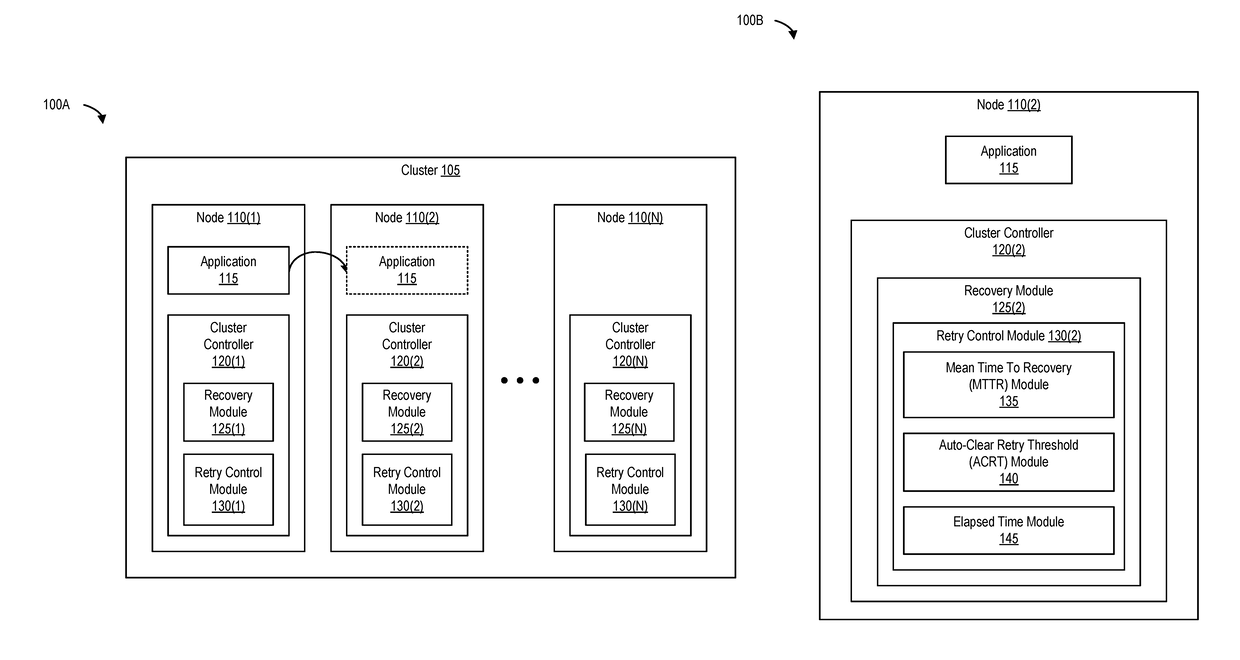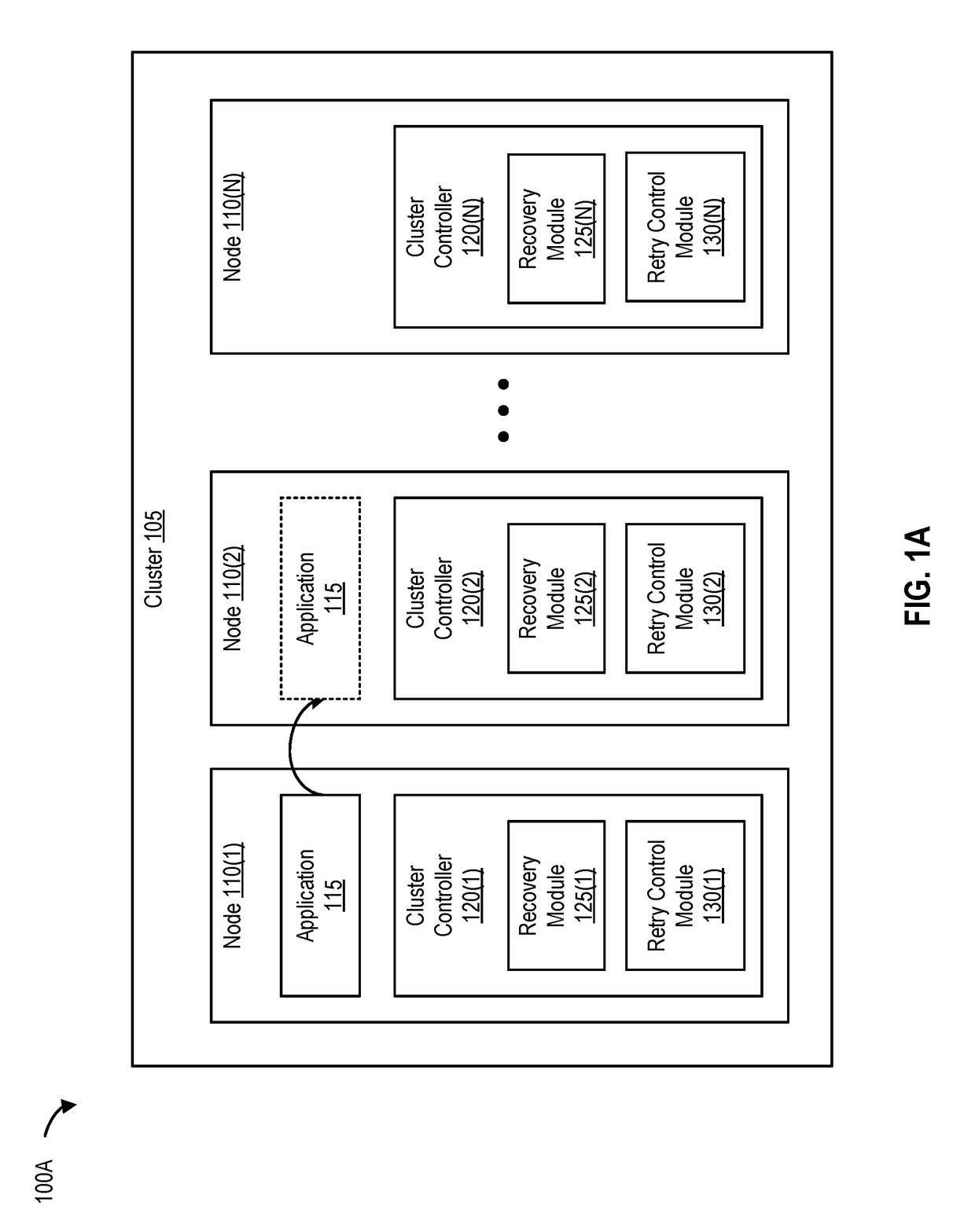Optimizing application recovery in unmanaged clusters
a technology of application recovery and unmanaged clusters, applied in fault response, data switching networks, instruments, etc., can solve the problems of consuming significant computing, unable to execute on that node, and unable to perform such recovery operations, etc., to achieve the effect of optimizing application recovery
- Summary
- Abstract
- Description
- Claims
- Application Information
AI Technical Summary
Benefits of technology
Problems solved by technology
Method used
Image
Examples
Embodiment Construction
Introduction
[0023]One or more nodes that are part of a cluster can fail for a variety of reasons. For example, a node (e.g., a computing device) in cluster can experience a hardware failure, a software failure, loss of storage connectivity, loss of network connectivity, and the like. When a node fails in a cluster, one or more applications executing on that node are typically failed over (or moved) to one or more other nodes in the cluster. In this manner, applications executing on the cluster can continue to function despite a problem with one particular node in the cluster.
[0024]Companies and organizations typically use cluster management software to manage and implement application failover and recovery operations in a cluster. After an application has been failed over from a failed node (e.g., to another node), the cluster management software performs one or more recovery operations to determine whether the failed node is recovered and is operational. If recovered and operationa...
PUM
 Login to View More
Login to View More Abstract
Description
Claims
Application Information
 Login to View More
Login to View More - R&D
- Intellectual Property
- Life Sciences
- Materials
- Tech Scout
- Unparalleled Data Quality
- Higher Quality Content
- 60% Fewer Hallucinations
Browse by: Latest US Patents, China's latest patents, Technical Efficacy Thesaurus, Application Domain, Technology Topic, Popular Technical Reports.
© 2025 PatSnap. All rights reserved.Legal|Privacy policy|Modern Slavery Act Transparency Statement|Sitemap|About US| Contact US: help@patsnap.com



